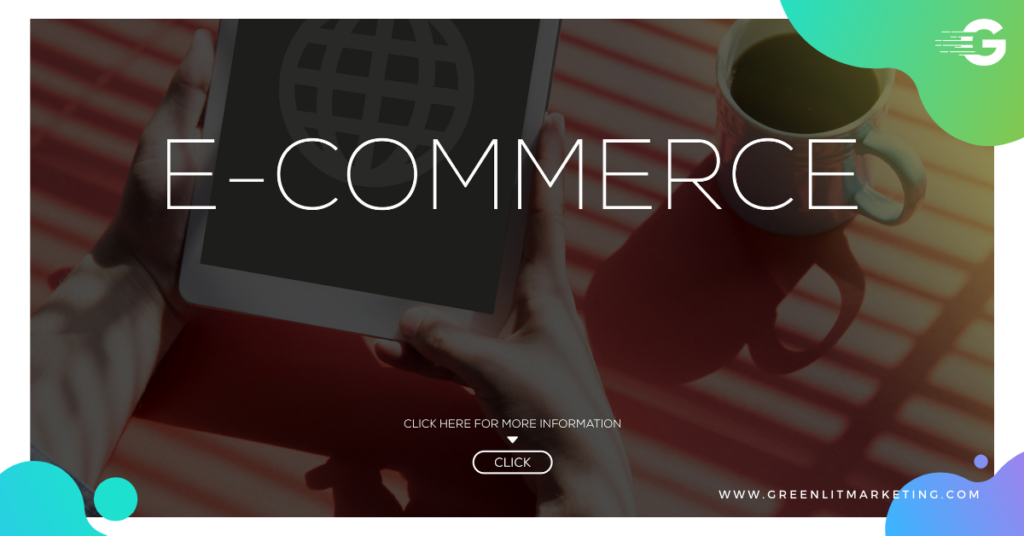Since the start of the pandemic, businesses have been struggling to keep their doors open and keep revenue coming in. While vaccinations are being rolled out, giving us a glimmer of hope, you can expect strict social distancing and health and safety measures to be in place for months or years to come until herd immunity can be achieved.
Proactive and forward-thinking companies have adapted to this new normal by finding creative ways to reach customers and sell their products. Many existing business owners and new entrepreneurs alike are opening ecommerce stores to sell their products online. If this is a practical solution you’ve been considering, here’s what you need to know about starting an ecommerce store for the first time.
Decisions to Make
Determining that starting an ecommerce store is the right next step for your business is only the first big decision you’ll need to make. There will be many more that will come your way during the process.
Ecommerce Platforms: For one, you’ll need to research the various ecommerce platforms available and determine which one is right for you. For example, many small businesses choose Shopify since it’s simple and user friendly, while Etsy is popular for those selling creative and crafty products. An important note: If you already have a website, you’ll want to ensure the platform you choose integrates well, so you can sell directly on your own website.
Payments: Next up, payment processing. How will you accept payments? It’s always a good idea to offer customers different payment choices to ensure everyone can buy in their preferred way. Apart from credit cards, you’ll probably want to consider mobile wallets like Venmo and payment platforms like PayPal, as well as local-specific options like Interac e-transfers in Canada and Alipay in China. Each payment method will come with its own fees, though, and not all options are popular with all types of audiences, so choose wisely.
Delivery: Before you can sell your products online, you’ll also need to determine whether you’ll want to sell them locally for curbside pickup only or if you’ll broaden your reach and offer delivery options, whether state-wide, nationally, or internationally. Curbside pickup removes much of the delivery logistics from the process, but it does reduce your reach.
Policies: Buying online can sometimes be hit or miss. People will want to ensure they can return the products if they don’t fit their needs once received. So, you’ll definitely need to state your refund and return policies for all sorts of scenarios. For example, what happens if a customer can’t pick up their order or meet the delivery driver? How will you deal with products that never arrive at the customer’s door? What if defective products need to be returned?
Costs to Consider
An ecommerce store is generally considered a more cost-effective alternative to a storefront. After all, you don’t need to hire workers to man the shop at all hours and you don’t need to pay high rent prices. However, it does still come with costs, including:
Website and domain: You’ll have monthly or annual fees to pay to keep your website and domain online. These prices can vary widely.
Platform: The ecommerce platform you choose will expect a fee, too.
Web design and development: You’ll likely need to pay someone to set up and design your website, as well as someone on an ongoing basis to maintain it for technical improvements and to keep products and prices up to date.
Payment processing fees: As mentioned above, each payment provider will charge you fees. Some may be monthly charges while others will be per payment processed.
Tax collection and remittance: An online business is still a business, so you’ll be expected to collect taxes and remit them to the government.
Marketing: “Build it and they will come” doesn’t really exist in the ecommerce world. If you expect people to find your online shop and buy from you, you need to get it out there into the world. That means you need marketing help. Outsourcing marketing is an easy way to bring in more traffic and improve your conversion rate, without having to learn everything there is to know about digital marketing on your own.
Advertising: Putting up ads on social media and Google, as well as investing in retargeting ads, can be a great way to get your products out there and entice people to buy.
Shipping: If you’ll be offering delivery services, whether local or international, you’ll need to look into shipping costs, as well as decide whether you’ll pay for shipping or shift those costs onto your customers to pay. Shipping costs vary widely depending on the courier, the size of your boxes, and the weight of your products. Shop around to get the best rate.
Challenges to Overcome
Starting an online store only seems easy. It turns out, though, that you’ll face plenty of challenges along the way, many of which may be time-consuming or costly to solve. Make sure you know what you’re getting into.
Some of the most common challenges include:
Ecommerce Setup: This includes both the technical back-end and front-facing aspects. On the back end, everything will need to function like it should and be effectively integrated into your system. On the front end, you’ll need to invest in high-quality photography, have a competitive pricing strategy in place, provide attractive descriptions for every one of your products, and know the best practices for developing a user-friendly store with an enjoyable shopping experience.
Shipping: Shipping logistics can be frustrating to deal with. Who will you use and how much will it cost to ship every single product in your store? Will you offer a flat fee to customers? What about free shipping over a certain amount spent? Another important question to answer is how fast will you be able to ship? Of course, people love to get free next-day shipping, but that isn’t always feasible.
A good way to start off with shipping is to only sell items that you know will fit into standard shipping packaging. Doing so will ensure you can provide accurate shipping costs.
Listing Your Products: Listing your products may just be the most time-consuming aspect of starting an online store. You’ll need to build a catalog of product listings, but gathering all the relevant product information and inputting it into the system takes a lot of time, especially if you plan to sell dozens or hundreds of products. From descriptions and photos to prices and detailed specs, there’s a lot to input. You’ll also need to tag all the products on the back end to make your products easily searchable.
Ideally, every product page you add to your store should include:
- Product or service
- Price
- A short and a long description
- Size or dimensions
- Meta description
- Photo and videos
- Alternatives (color, style, size, etc.)
- Guides (Product sheets, sizing guide, buying guide)
- Delivery options
- Quantity
- Reviews
- Related products
- Canonicalized URL structure (URL slug /mens-clothing/shirts/polo-shirt)
Want to get up and running quickly? Consider launching with just a few high-margin items to start off with, and expand your catalog over time.
Promoting and Optimizing Your Ecommerce Store
There are an estimated 12-24 million ecommerce stores on the internet, with more being added every day. To say it’s a competitive landscape would be an understatement. You’ll need to work hard to gain your target audience’s attention.
Digital marketing is going to be really important to your business growth. The good news is there are many ways to get in front of online shoppers.
Social media: Every ecommerce business should be active on social media. Not only is social an excellent place to highlight new products, deals, and discounts, but it’s a way to show off your brand’s personality, connect with your followers, and provide customer service.
PPC management: Many ecommerce businesses take off with an investment in Google and social media ads, especially if your products are Instagram-worthy. You’ll need some PPC management knowledge to ensure you’re targeting the right audience and not throwing money out the window, though.
Google Shopping: These are especially important display ads that can significantly increase traffic and conversions. They’re the ads you see when you type in a product search on Google. Unfortunately, they’re pretty hard to set up and manage. The best way to get in on Google Shopping ads is to set up an RSS feed from your product store. This can get complicated quickly. Using a pilot option to provide ROI before jumping into it is probably a good idea.
Retargeting ads: If a website visitor has already been on your site, that means they already know about you and are likely already interested in what you’re selling. This makes them warm leads. Make sure to stay top of mind to these shoppers with retargeting ads. These ads are shown only to those people who have already landed on your site. The purpose is to remind them of your online shop so they come back and buy (or buy again).
Email marketing: Email marketing is an excellent way to keep in touch with your loyal customers and interested prospects. You can send them discounts and coupons via email or send them a list of your newest products. Email marketing keeps you top of mind, helps you nurture customer relationships, and gets people to keep coming back to learn more.
Loyalty program: Customers LOVE loyalty programs. These programs make them feel special and give them an incentive to keep buying from you.
SEO strategy: Search engine optimization is critical to being found online. An SEO strategy will help you optimize your ecommerce store so you can be found online by web searchers who are looking for similar products to the ones you sell. SEO is a multi-pronged approach, but it relies heavily on finding and implementing the right keywords in the right areas on your website so that search engine crawlers will list your website for those keywords on search engine results pages (SERPs). Ideally, you want to be listed on Page 1 for your top keywords.
Analysis: Anytime you invest in digital marketing, you should also put time into analysis. Digital marketing offers you a wealth of information on your site’s technical infrastructure and consumer behaviors. This valuable information can help you optimize your website and better target your audience in order to make more sales.
There’s a lot to know and a lot to do in order to launch and manage a successful ecommerce store. Unfortunately, creating an SEO-friendly and user-friendly ecommerce website can be complicated and time consuming. That’s why it’s a good idea to work with a full-service digital marketing agency that offers ecommerce services and can help you build your store, from start to finish. Take the first step to getting your store up and running by booking a free consultation with GreenLit Marketing.



